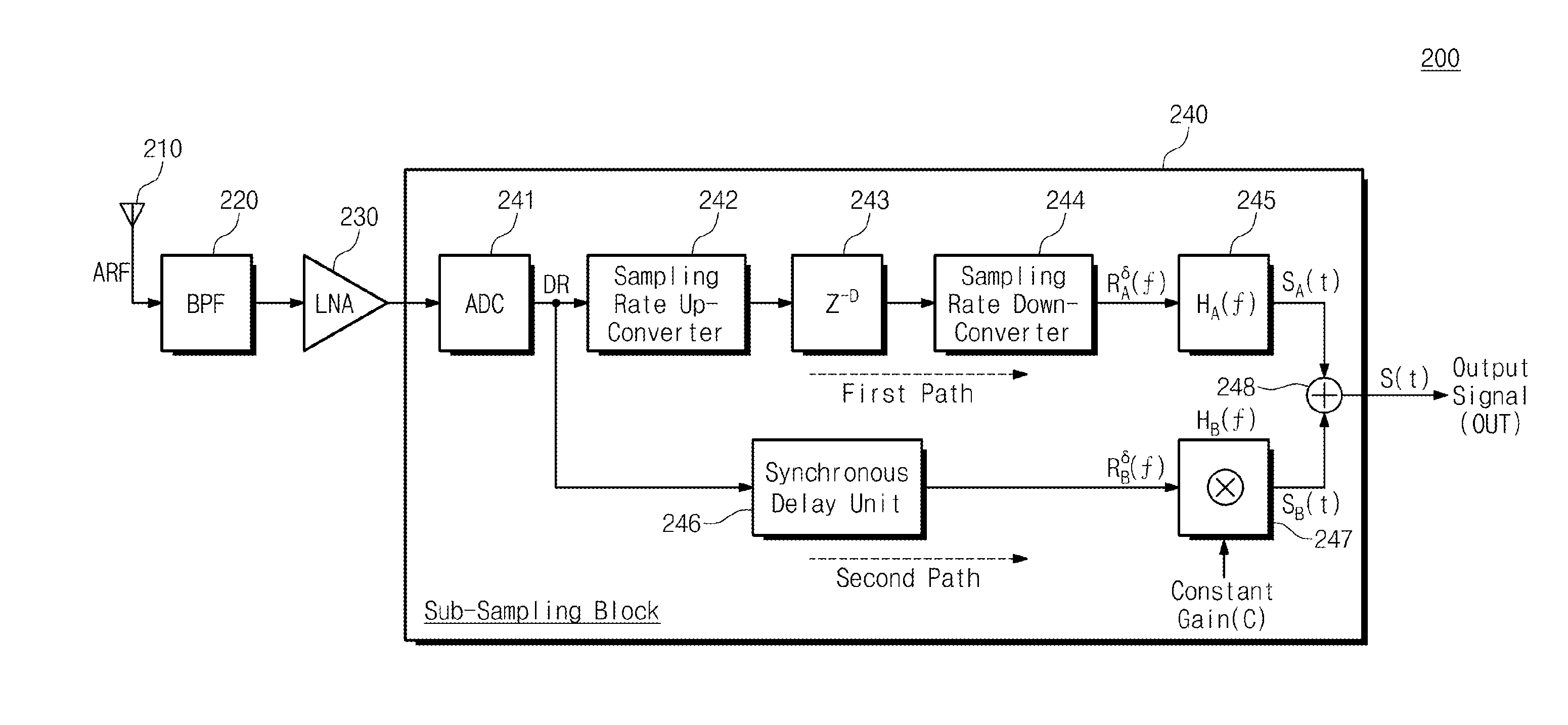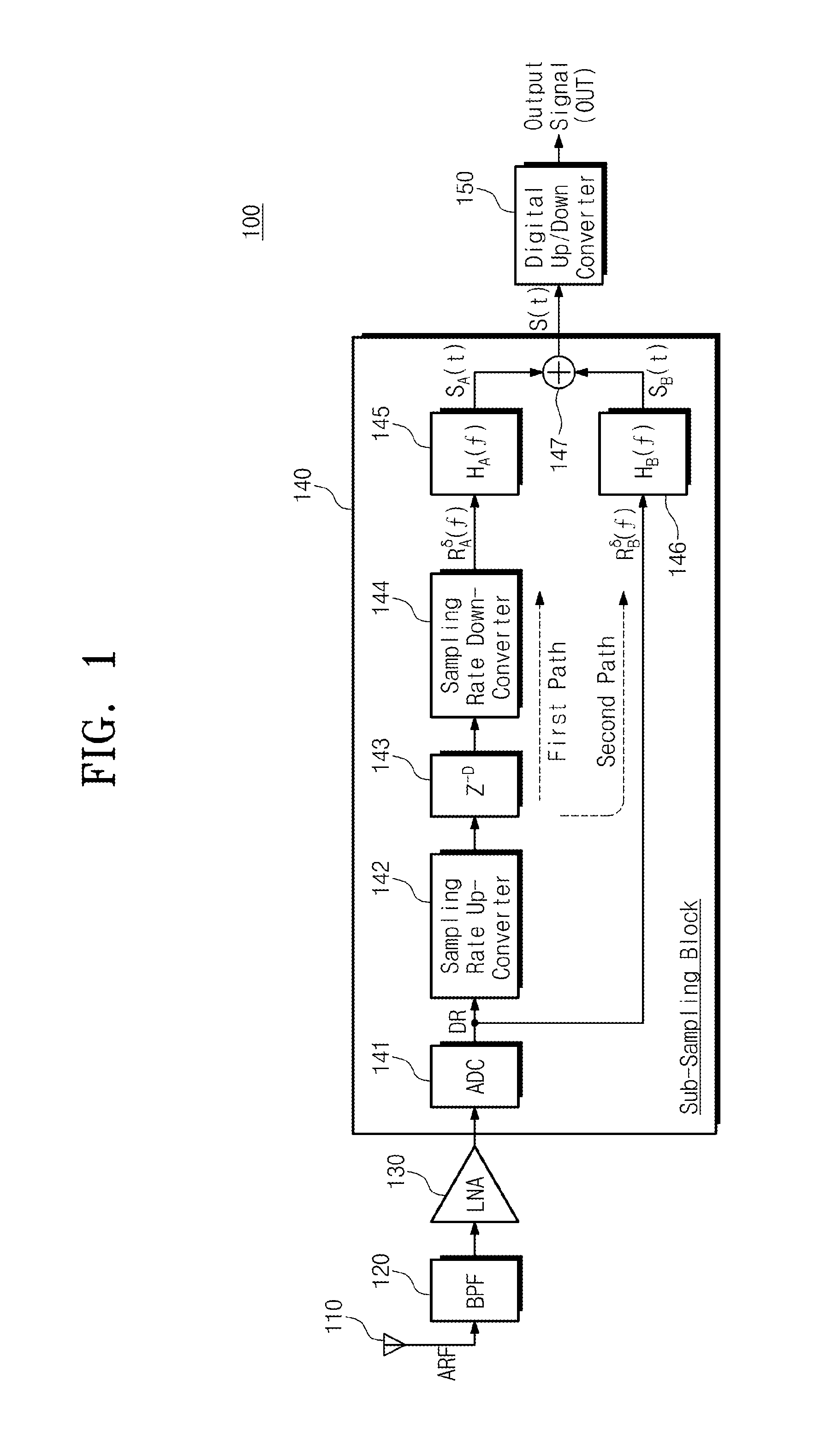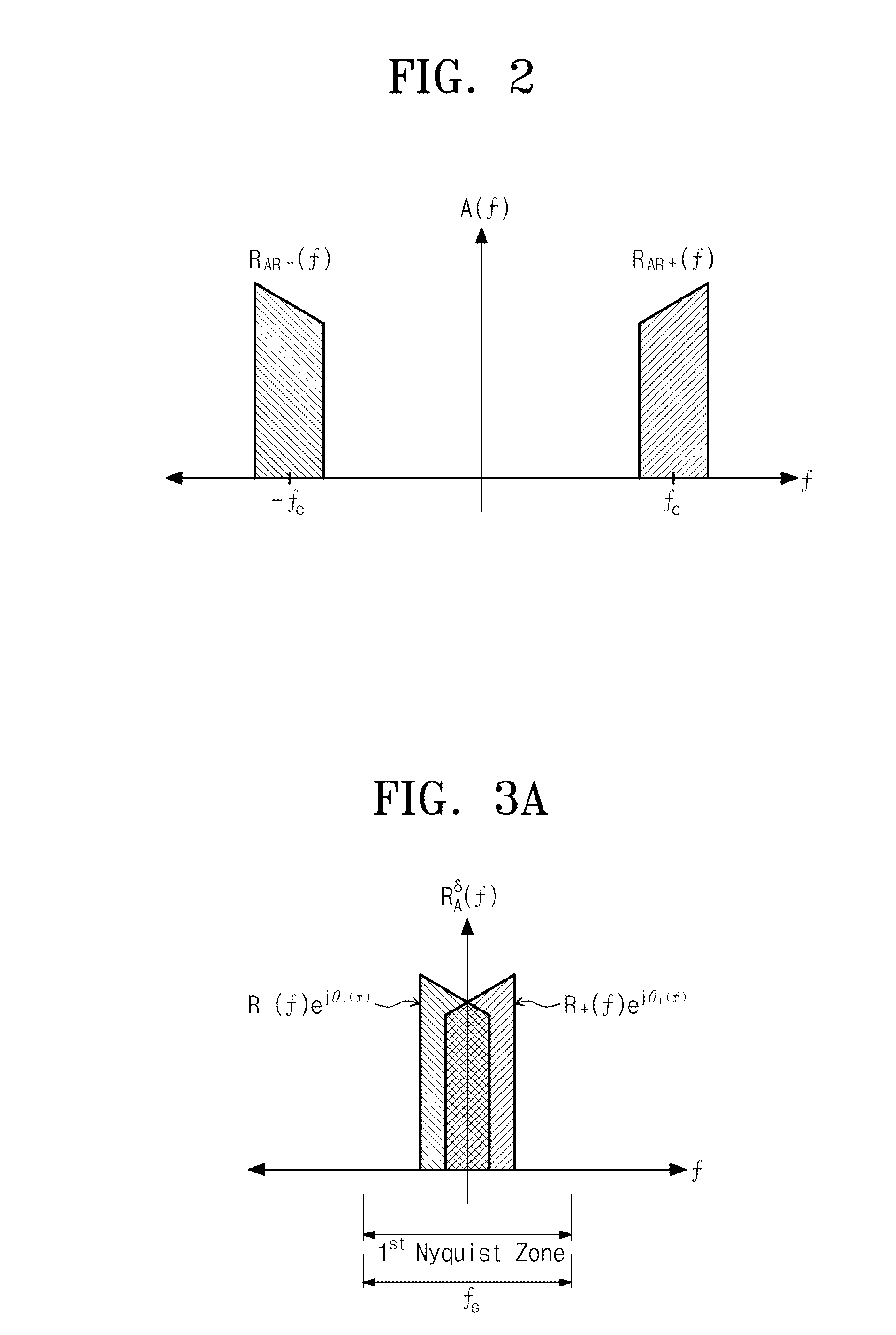Sub-sampling receiver
- Summary
- Abstract
- Description
- Claims
- Application Information
AI Technical Summary
Benefits of technology
Problems solved by technology
Method used
Image
Examples
Embodiment Construction
[0026]The above general descriptions and the following detailed descriptions all are exemplary for providing additional descriptions on the claimed invention. Therefore, the present invention is not limited embodiments to be described below but may be implemented in other forms. Exemplary embodiments introduced herein are provided to make disclosed contents thorough and complete and to sufficiently transfer the spirit of the present invention to a person skilled in the art.
[0027]The terms used herein are only used to describe specific embodiments and not intended to limit the present invention. The terms in singular form include the plural form unless otherwise specified. It should be understood that the terms “includes” or “has” indicate the presence of characteristics, numbers, steps, operations, components, parts or combinations thereof represented in the present disclosure but do not exclude the presence or addition of one or more other characteristics, numbers, steps, operation...
PUM
 Login to View More
Login to View More Abstract
Description
Claims
Application Information
 Login to View More
Login to View More - R&D
- Intellectual Property
- Life Sciences
- Materials
- Tech Scout
- Unparalleled Data Quality
- Higher Quality Content
- 60% Fewer Hallucinations
Browse by: Latest US Patents, China's latest patents, Technical Efficacy Thesaurus, Application Domain, Technology Topic, Popular Technical Reports.
© 2025 PatSnap. All rights reserved.Legal|Privacy policy|Modern Slavery Act Transparency Statement|Sitemap|About US| Contact US: help@patsnap.com



